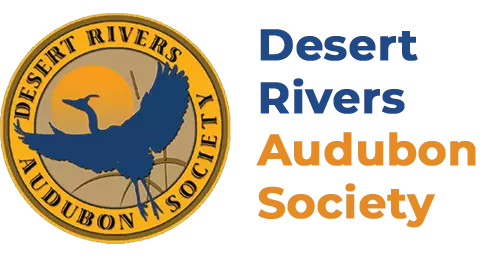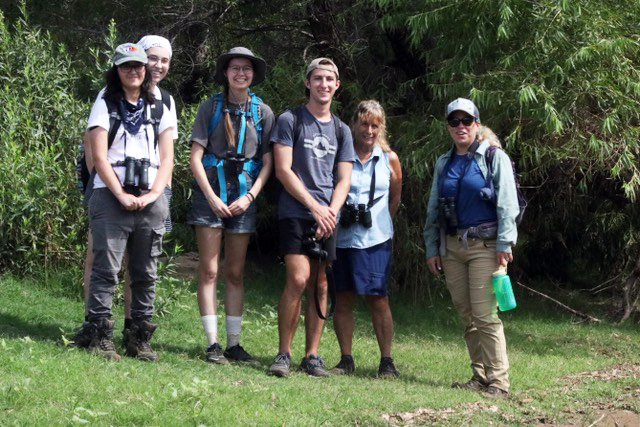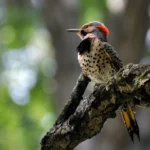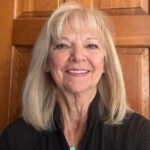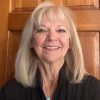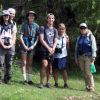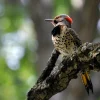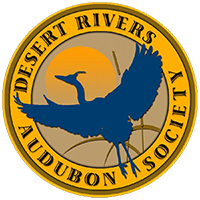By Karen LaFrance, Co-Chair/Coordinator, Sonoran Audubon Society
Sonoran Audubon Society (SAS) members and other birders will look on as the Bureau of Land Management (BLM) places three new Important Bird Area (IBA) signs on the Upper Agua Fria River on April 19th, rededicating the Agua Fria National Monument Riparian Corridors IBA in celebration of the 25th anniversary of the IBAs.
The Agua Fria IBA and the Tres Rios IBA, established at the same time as part of the National Audubon Society’s IBA program, was an SAS very important achievement. Our members provided countless hours of field work to get the IBA designation. Over time, the IBAs have become the fundamental pillar of Sonoran Audubon’s commitment to science, education and birds.
Horseshoe Ranch, IBAs and Cuckoos
Horseshoe Ranch is an inholding owned by the Arizona Game and Fish Department in the Agua Fria National Monument about 60 miles north of Phoenix Metro. Many years ago, Game & Fish determined to buy out this private cattle ranch. The friendly organizations that advocated for a conservation purchase included Sonoran Audubon. To help, SAS raised funds to assist the conservation-oriented financing group. So Sonoran Audubon has a strong legacy affinity for this place.
Important Bird Areas (IBAs) are an initiative of National Audubon Society (NAS) to encourage bird habitat conservation everywhere. Twenty five years ago, volunteers from Sonoran Audubon identified its two IBAs—one at Tres Rios and the other on the Agua Fria River. Tice Supplee, Andre’e Tarby and Bob McCormick (“McBob”) along with staff at Audubon Southwest (formerly Audubon Arizona) were instrumental with other SAS volunteers. They surveyed and counted bird species, documenting for NAS scientists the importance of these riparian areas for birds.
These dedicated volunteers remain heavily involved with SAS and the IBAs. McBob, Tice and Andre’e and other volunteers count birds and monitor the IBAs. McBob tabulates data and sends each year’s information to National Audubon’s online database.
Along with other data, including the Christmas Bird Counts, NAS uses this information about birds to determine long term trends. Their report “Survival by Degrees” on bird habitat loss amid climate change and growing human development is available here: https://www.audubon.org/climate/survivalbydegrees
Western Yellow-billed Cuckoos and the SAS Internships
SAS’ Western Yellow-billed Cuckoo Survey Internships, now in their fifth year, are an integral part of this conservation effort at SAS’s two IBAs. As the climate warms and freely running streams are fewer, these birds are endangered in the west. The two IBAs have appropriate cuckoo habitat, attracting these birds which migrate to Arizona to nest in the heat of summer. SAS is committed to engage younger folks on behalf of birds and their habitat, so this priority-most importantly-matches with the chapter’s long-term effort to document birds in the IBAs and to conserve and advocate for protection of these areas.
The SAS interns work the Cuckoo Survey routes from mid-June to mid-August after two days of formal training with Cathy Wise of Audubon Southwest, including on site with the cuckoo guides. Interns count the cuckoos and also note the other birds seen or heard. Audubon Southwest compiles the data each year, which is then maintained at US Fish and Wildlife. Several former interns, having earned their certificates per US Fish and Wildlife requirements, have become employed full time to count our western version of the cuckoo.
McBob, Cathy Wise, Tice and Tim Flood are SAS’ senior guides for interns. Other volunteers include Kathleen McCoy, Kaylee Del Cid, Grey Garten, and several other intrepid volunteers, together with our several interns. Damon Hann from Bureau of Land Management also volunteers to count cuckoos on the SAS IBAs in the summer.
Reminiscences
All of the volunteers and interns have favorite stories about their time listening for cuckoos. In the new era of cell phones, fantastic photos have emerged—of Gila Monsters, various squirmy snakes and colorful resident birds. Here’s my story from yesteryear:
It WAS actually decades ago! I got trained for cuckoo surveys when Cathy Wise, who was then at Arizona Game and Fish, introduced us to cuckoos. Tice Supplee and I took our sleeping bags and binocs and after dark one evening hiked into the Agua Fria River corridor aiming for our next day’s survey start point. We bushwhacked through tall grasses on the banks carrying the handheld speakers and data sheets for the survey. We stopped in the middle of the river—which was shallow but flowing— and “slept” on an island of rocks. At the crack of dawn we got up to do our count.
When I think about that adventure now, I can only imagine how many local critters might have been around that night! But we found a handful of cuckoos and that made the short, uncomfortable night’s sleep absolutely worth it!
